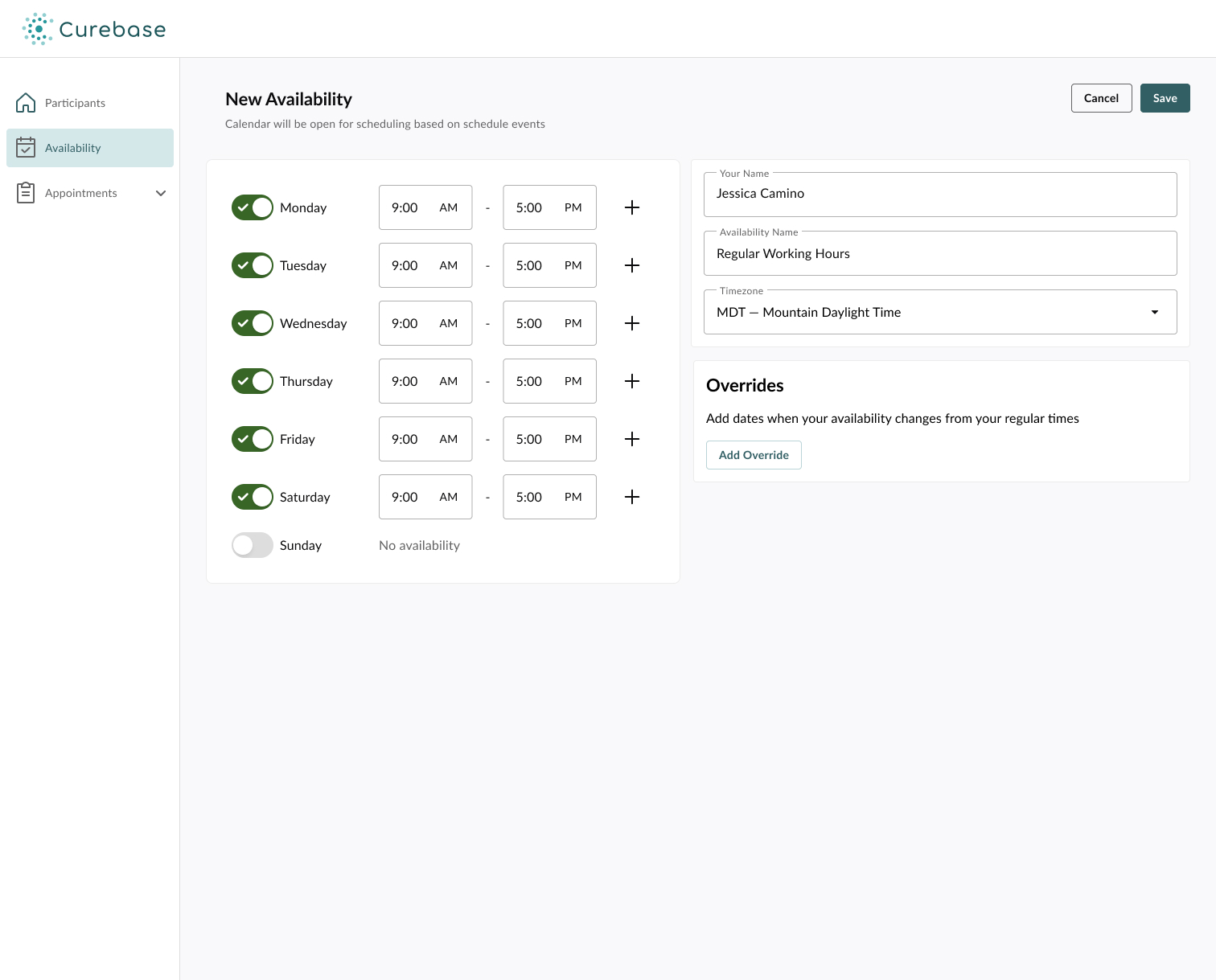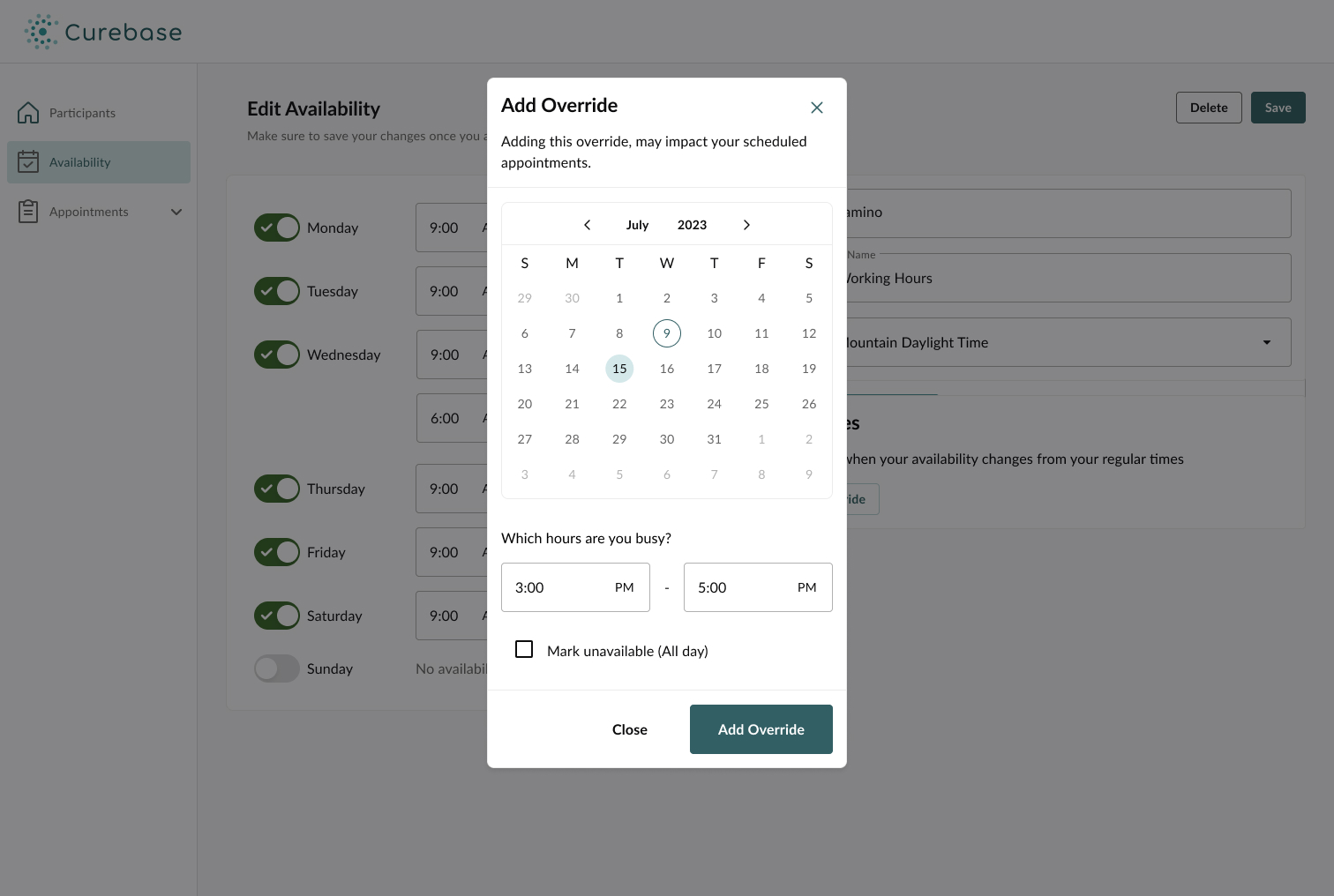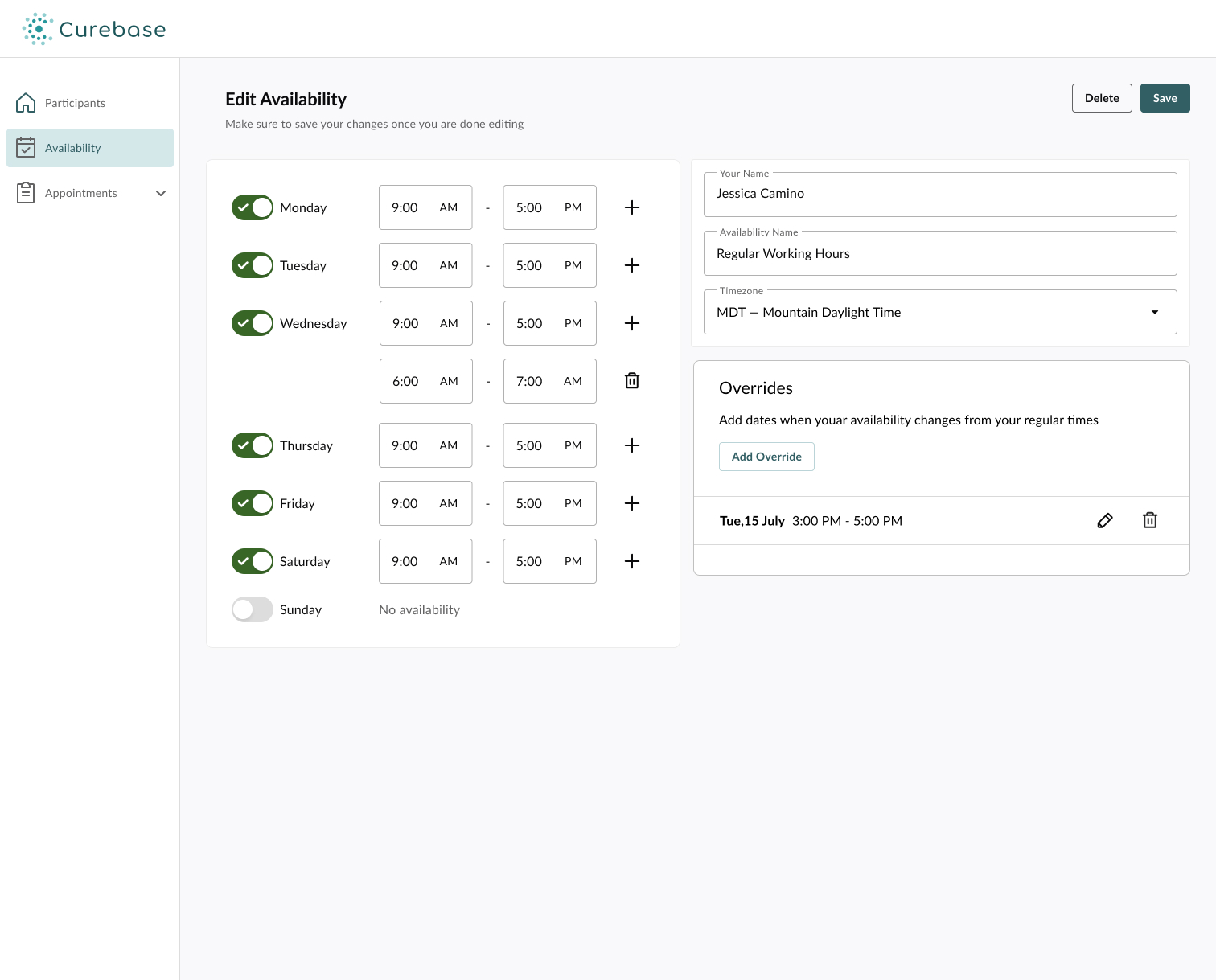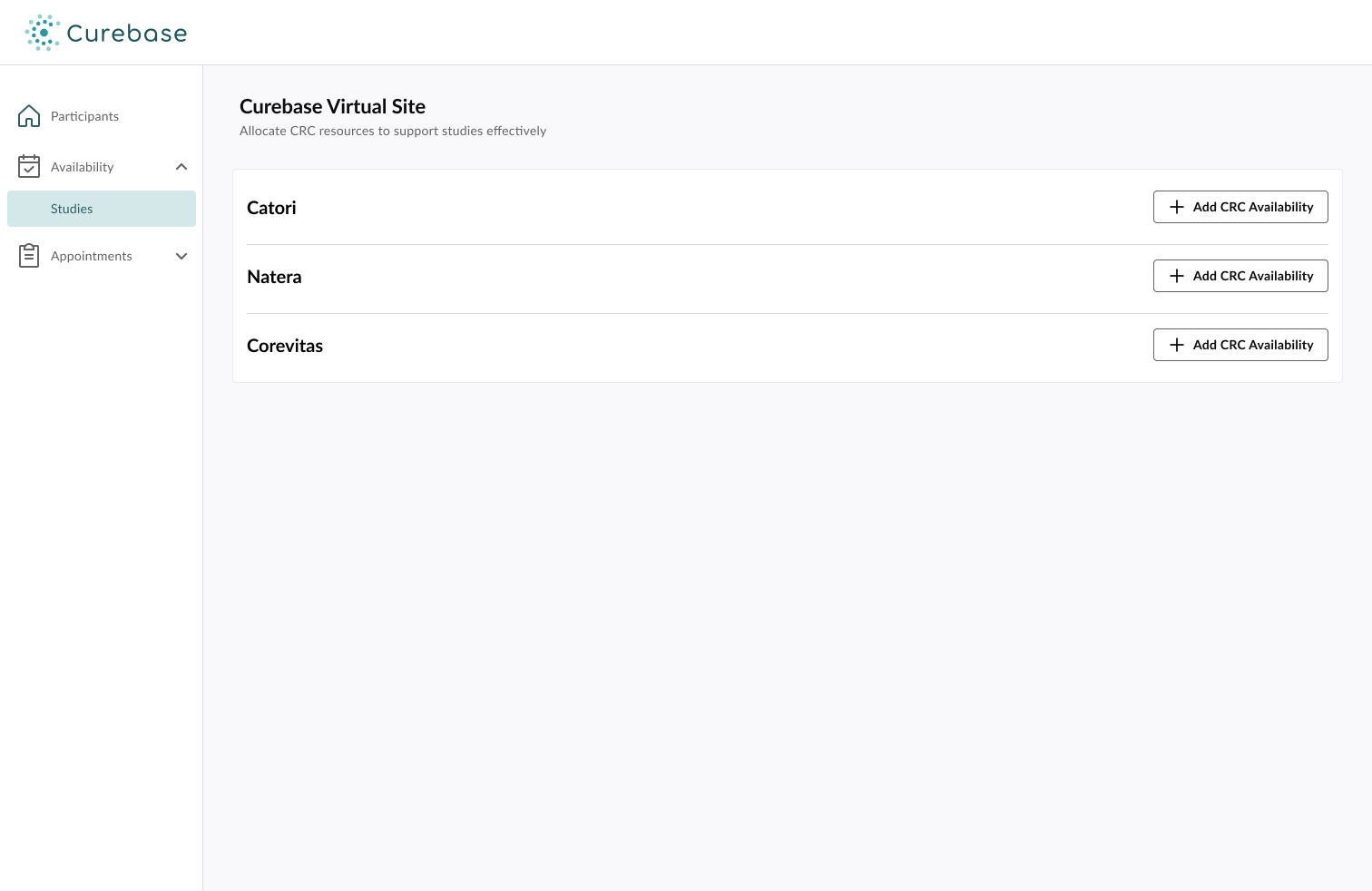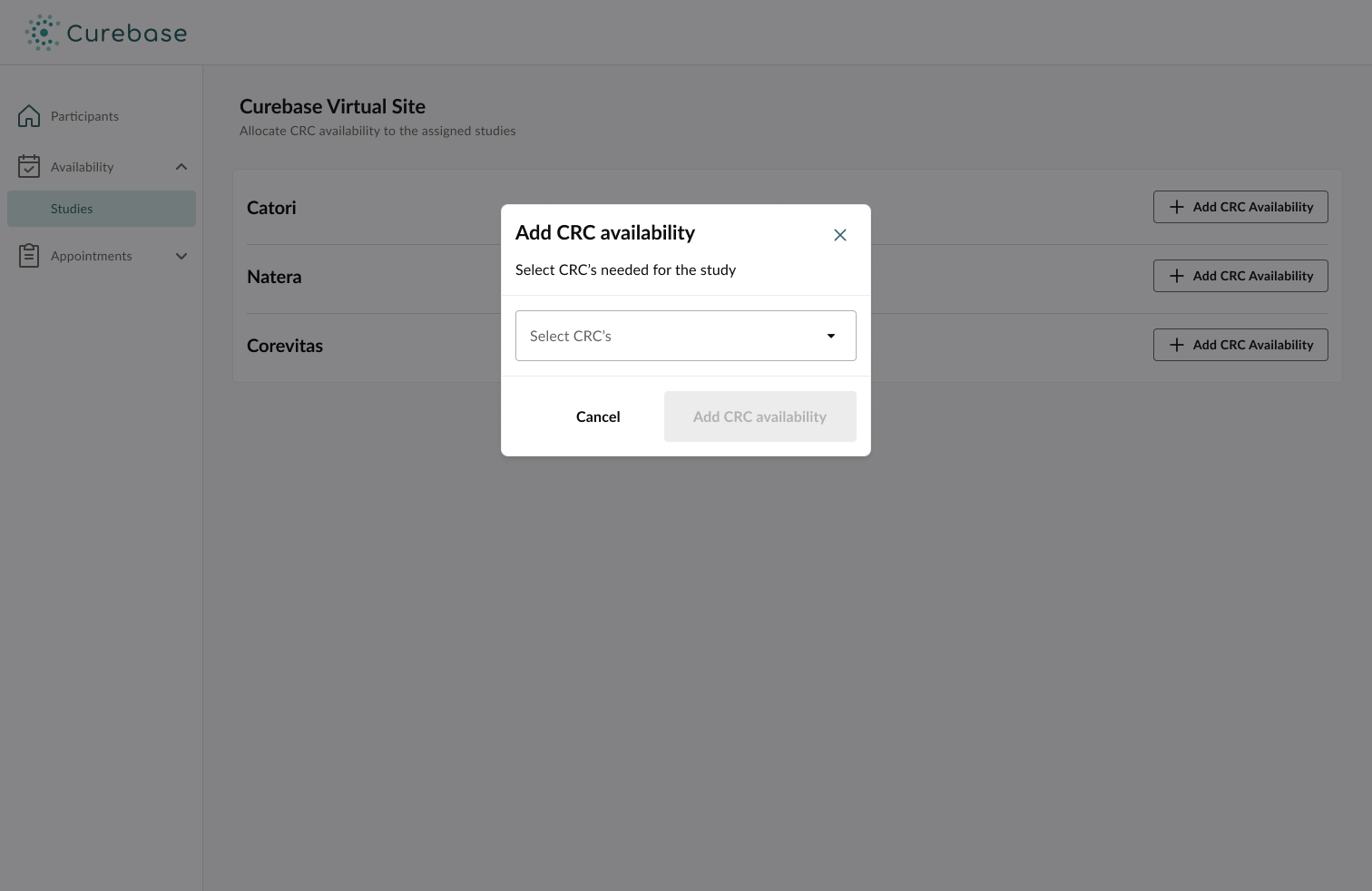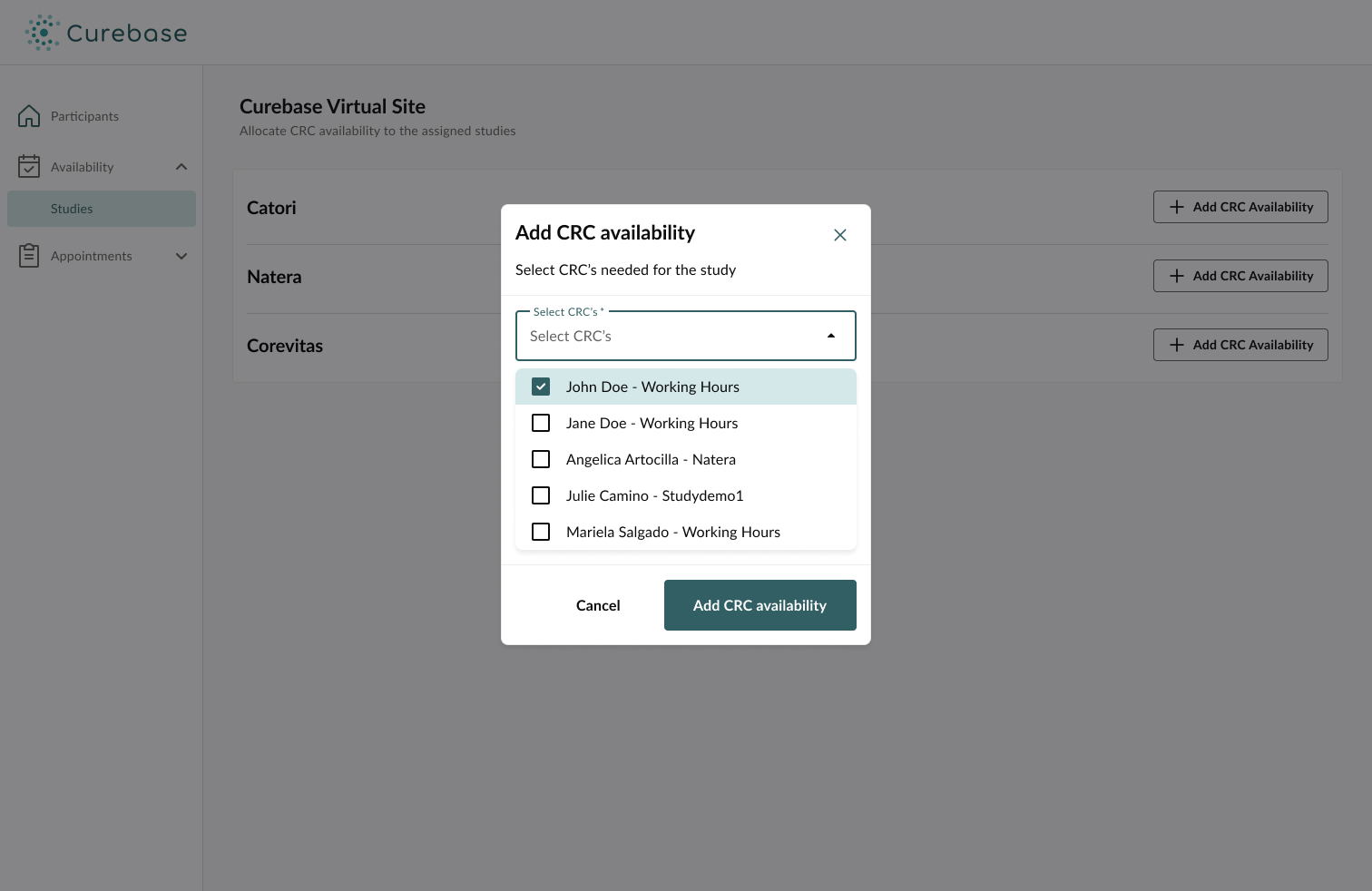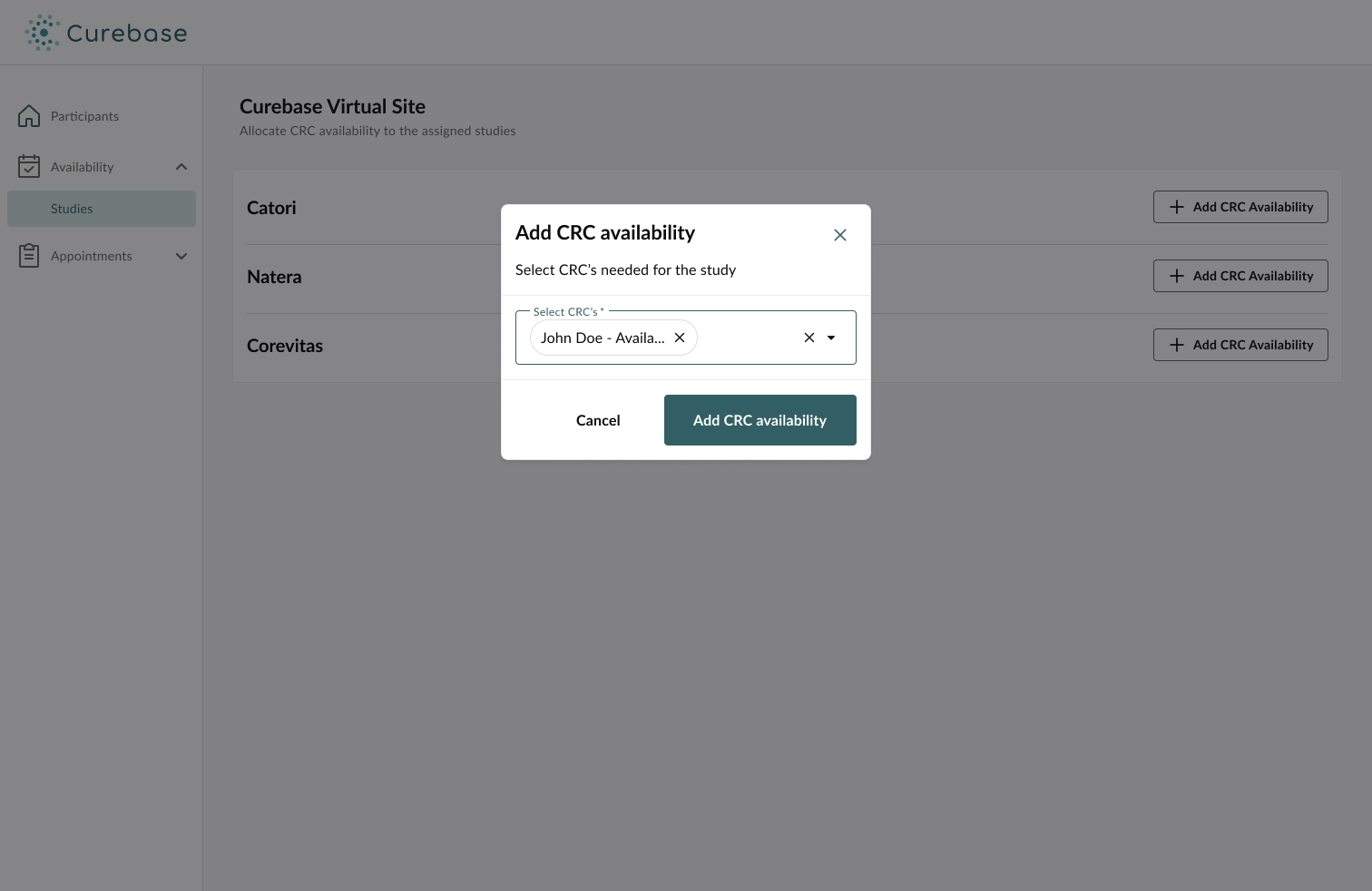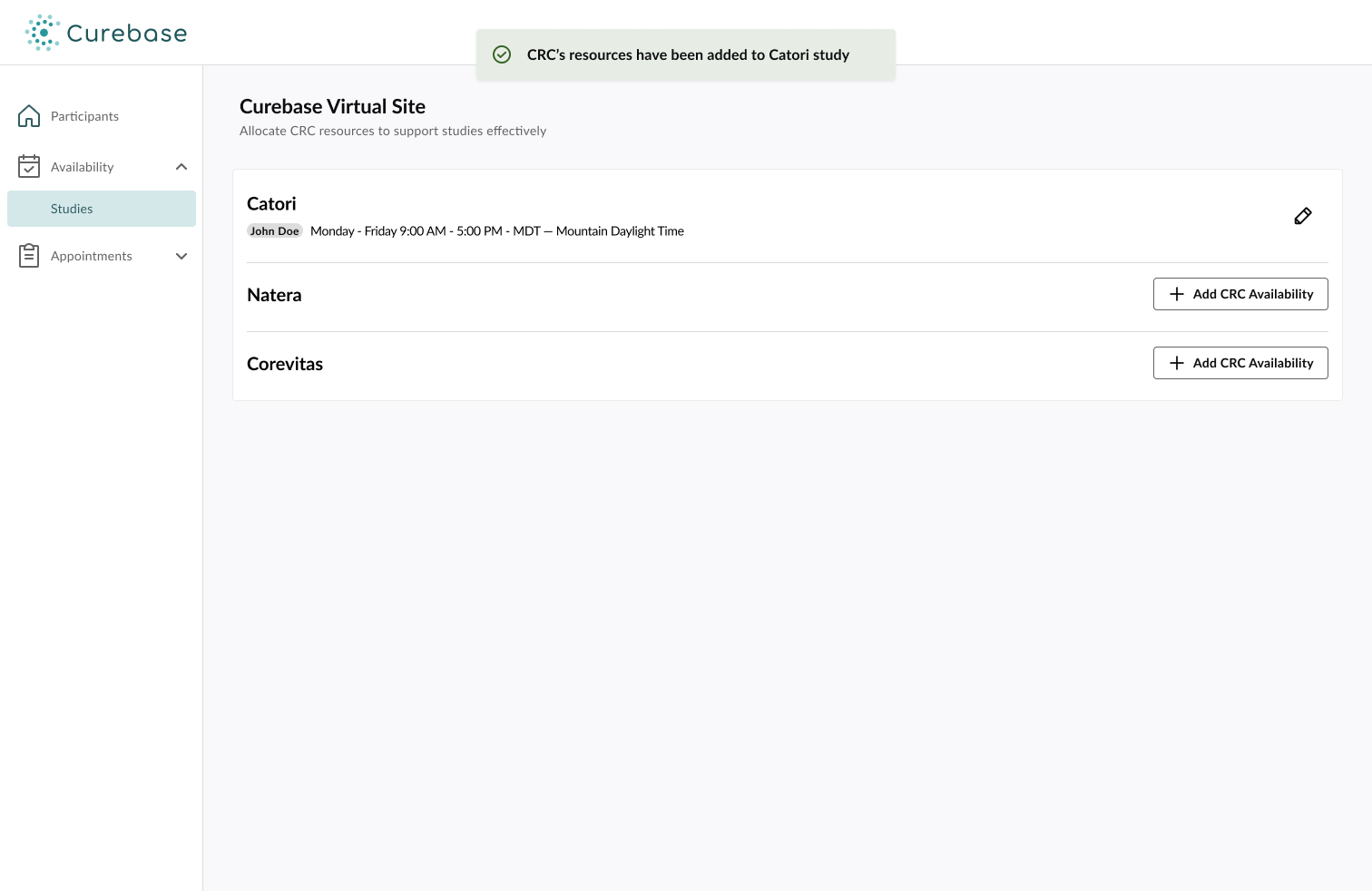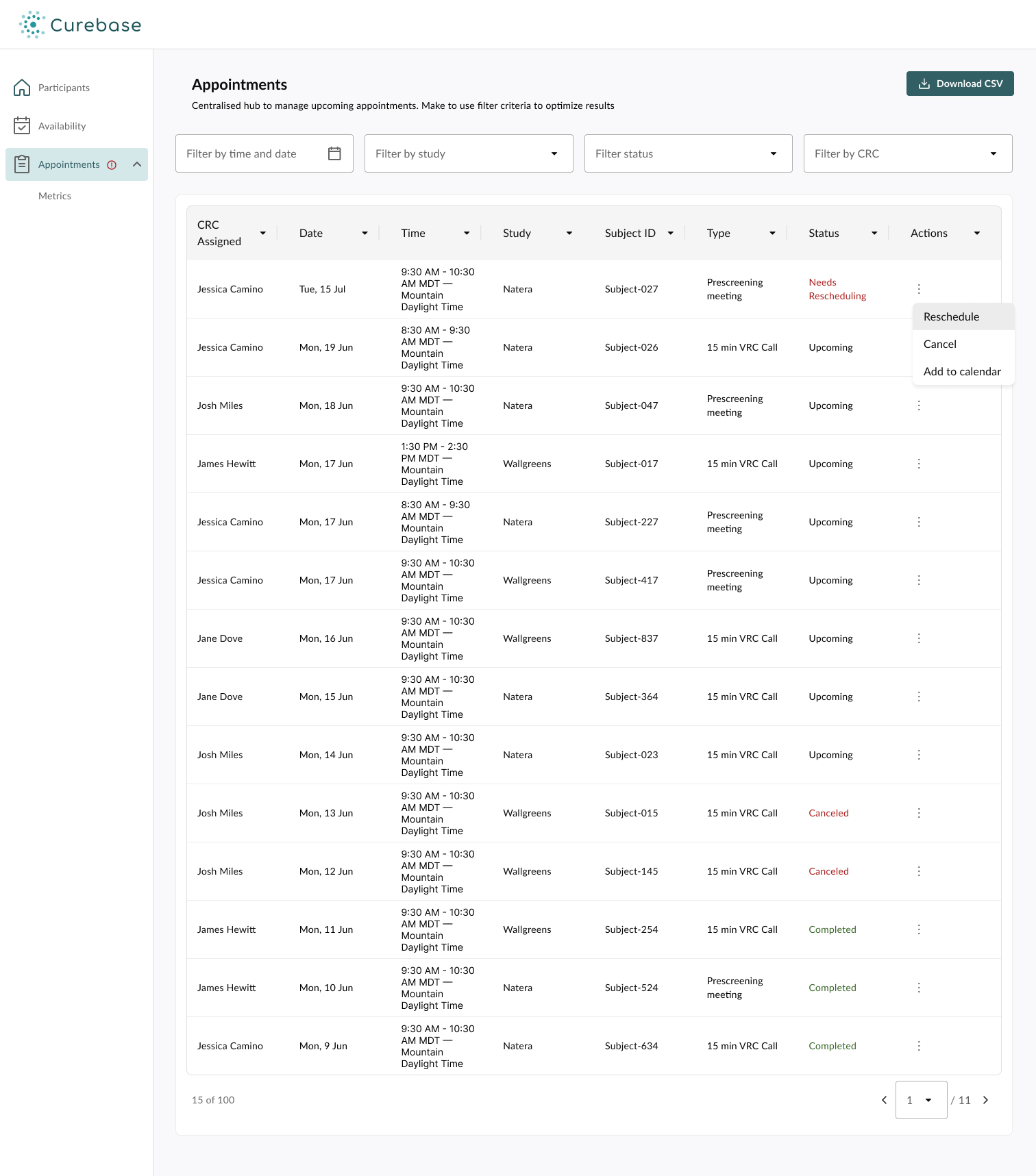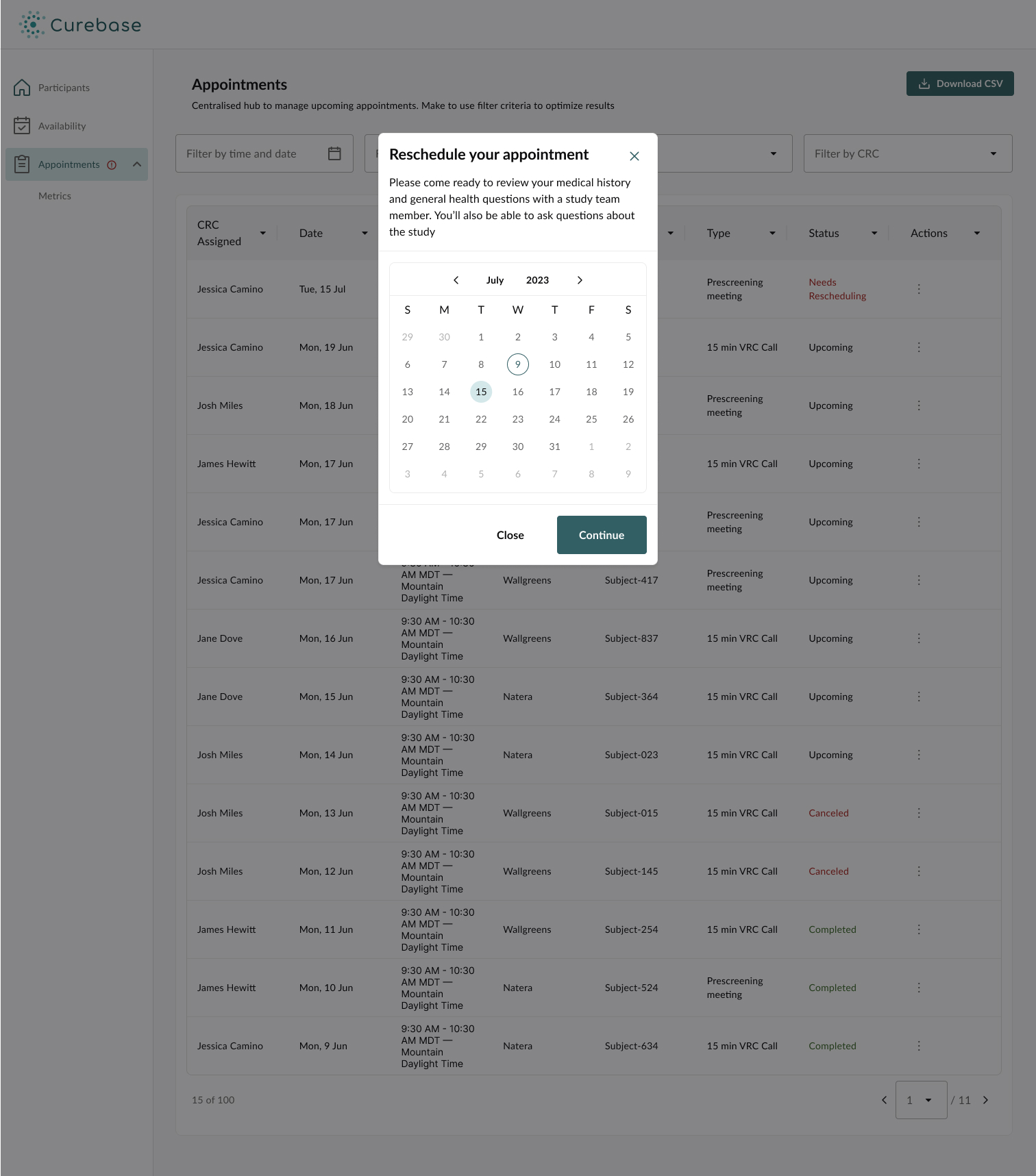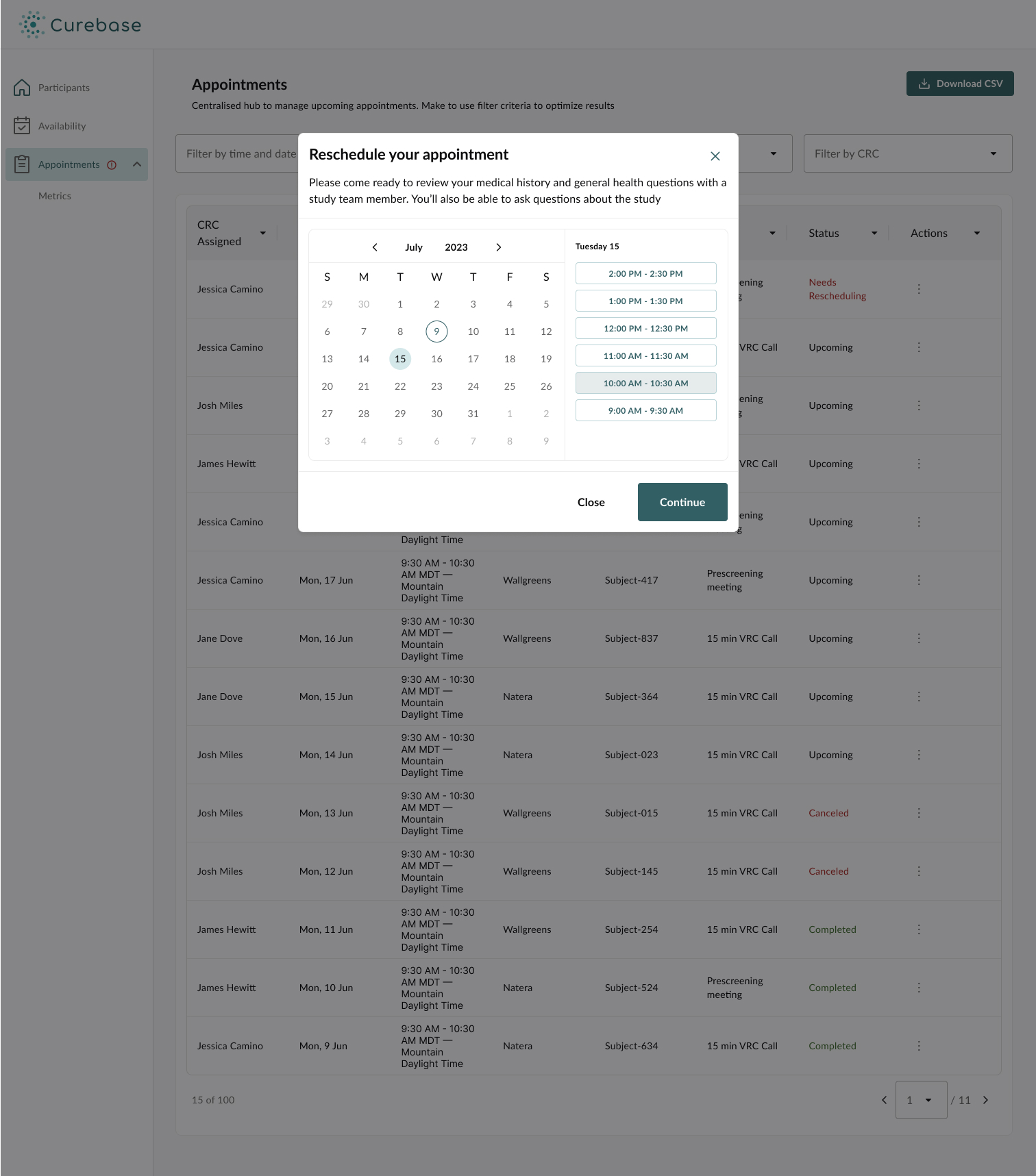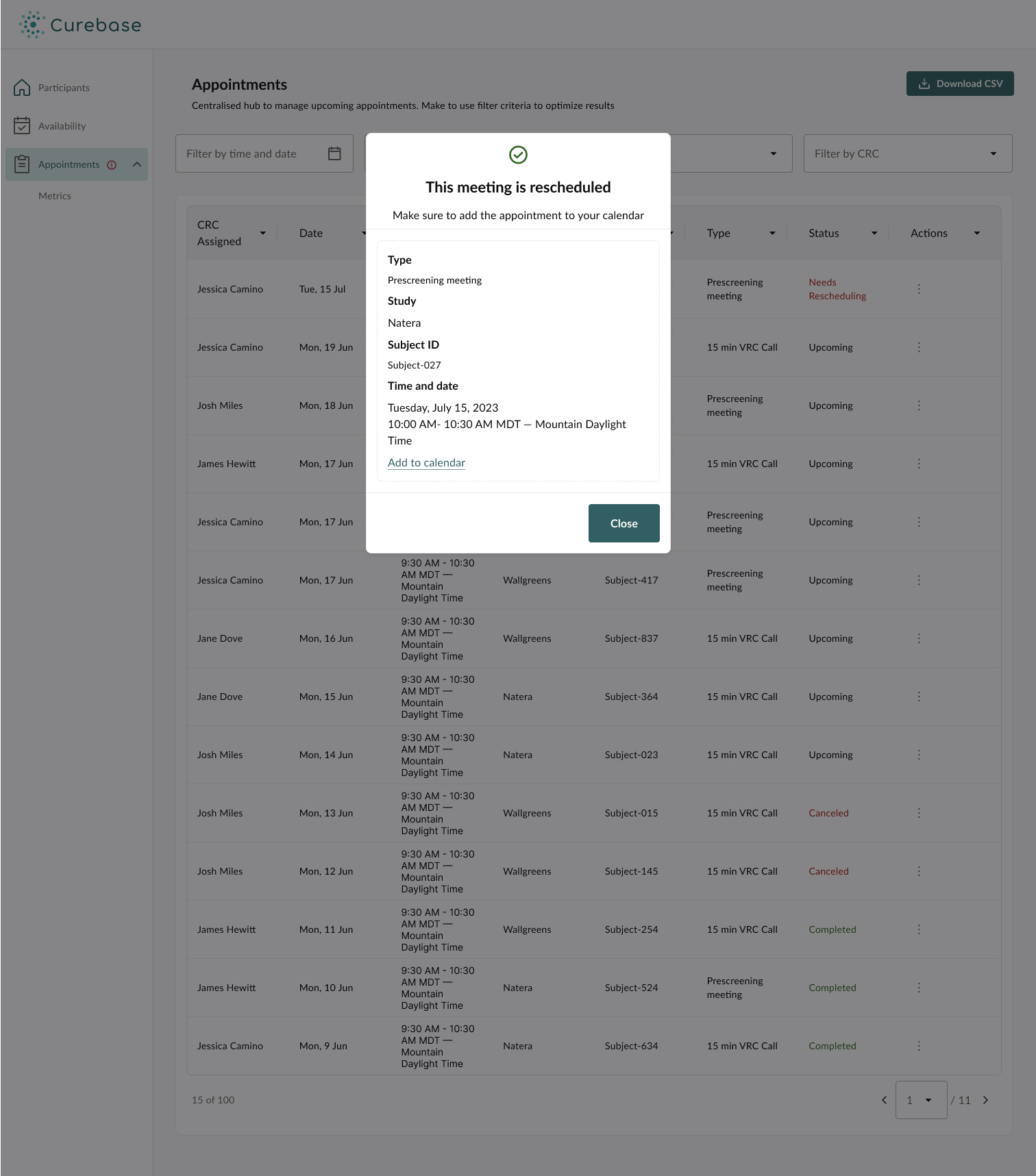The Challenge
Curebase Clinical Research Coordinators (CRC’s) faced challenges in task completion, often requiring assistance from the Implementation team, resulting in delays even for simple tasks.
Additionally, managing multiple scheduling systems in their workflow created maintainability issues. Furthermore, the complexity of the system demanded resource scaling in larger trials, leading to a substantial amount of manual work.
The App's user interface (UI) had unintuitive commands and it lacked a proper Visual System
Solutions
Our solution addresses critical aspects of CRC’ operations, making scheduling and availability management more efficient and user-friendly.
- Customized availability section and settings designed to meet the unique needs of CRCs and CRC Leads.
- An intuitive and user-friendly approach for editing availability, with override functionality, allowing for easy adjustments when necessary.
- Source of truth across all studies for streamlined tracking and management of participant appointments.
- Seamless integration of calendars into the scheduling process, enhancing convenience and accuracy.
Outcomes
The number of CS tickets decreased to 0 from CRC’s editing availability
CRC’s save above 40% of the time when doing their tasks, increasing the follow-up rate of participants.
The Scheduling process can now be included as part of Curebase SaaS model for external sites ( with little configuration needed )
Updating scheduling flow with new components and styles from Curebase Focus UI Design System
Availability setup and appointments flow prototype
To fully understand the problem I led a Known knowns workshop with the PM to align the knowledge we had on scheduling
Knowns
- CRC’s use external tools and manually add participant appointments to Gcal
- CRC’s cannot set or edit their own availability
Unknowns
- What is the full Journey of a CRC when scheduling appointments?
- How do CRC’s availabilities tie back to sites and studies?
- How often the IS team change availability for CRC’s
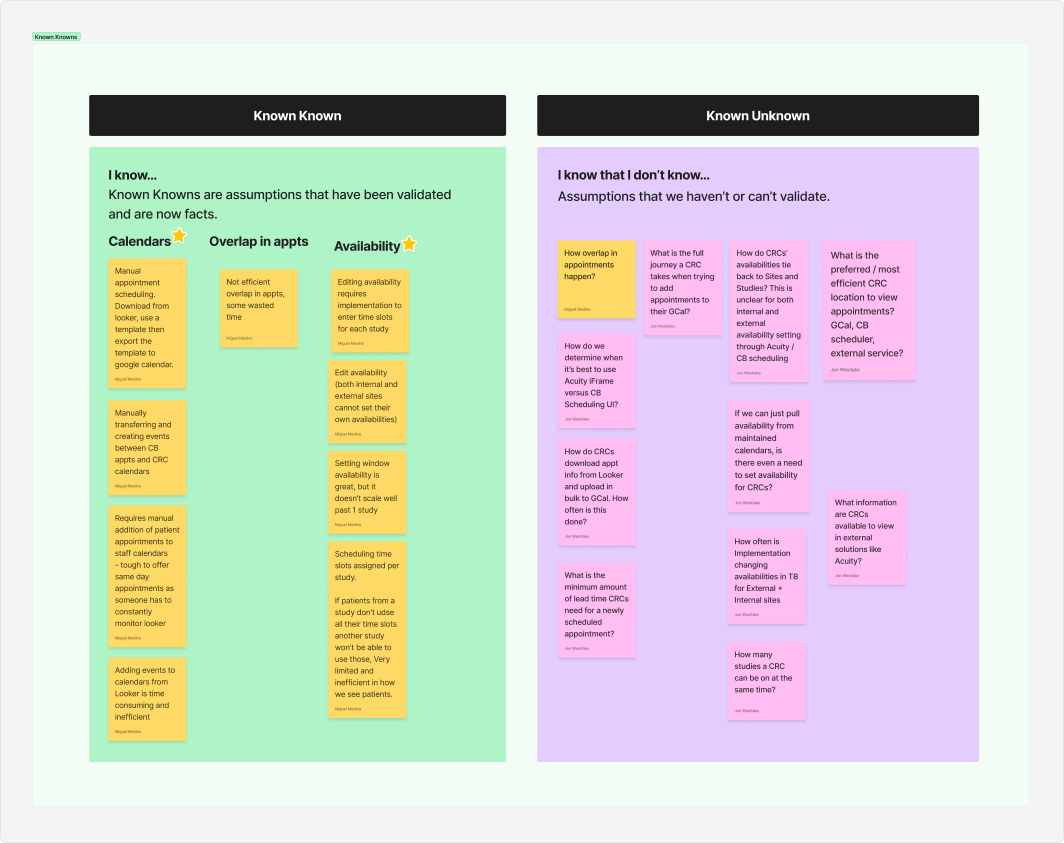
Insights gathered from the "Known Knowns" workshop.
Once we got our knowns and unknowns from the activity l created a research plan, and conducted user interviews with CRC’s ( 7 ) in collaboration with the product manager.
To analyze and make sense of the feedback gathered from the user interviews I created an affinity diagram and mapped the current scheduling CRC experience, to share it with the product manager and Engineers to highlight and align the main insights that we discovered.
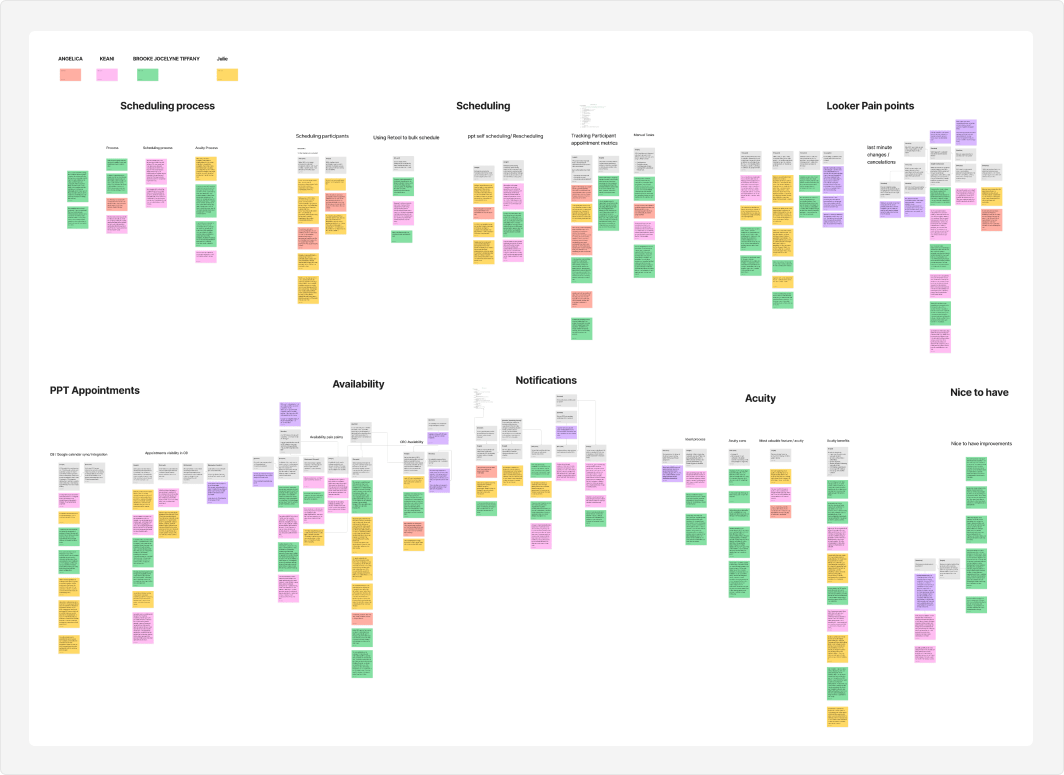
Scheduling Interpreted Feedback from User Intervies ( Affinity Diagram )
Highlighted pain points of the CRC scheduling experience
After interpreting and organizing all the insights, we found ourselves facing a substantial number of identified issues. Given our tight deadline, we needed to focus only on what was fundamental for our users.
I took the lead in conducting an “impact pyramid workshop”. This session harnessed the insights from the affinity diagram to prioritize the key categories that held the utmost significance in achieving our user's and business goals.
Key Insights
1.- Availability
Most of the problems are around managing availability and not just scheduling — CRCs cannot set and update their own availability without TTMs doing it for them
2.- Reduce Manual Effort
There is substantial CRC manual effort to get the accurate statuses on appointments as there is no single source of truth — it currently requires 4+ tools to get a single appointment on a calendar
3.- Tracking and gathering Appt metrics
We need more robust appointment metrics and tracking to ensure our resource management and demand forecasting are as accurate as possible as we scale into bigger studies
In order to define the next steps we needed to treat the solution as an MVP due to the complexity of the flow and the resources we had at the time.
I led an MVP workshop with the PM and Engineers to define and separate the fundamental functionality we needed in each of the new flow steps and to focus first on the most impactful areas of the flow
1- Availability Setup
2- Appointments
3- Scheduling / Rescheduling
4- Cancelations
Prioritized scheduling flow items and requirements for MVP
Availability Setup
Individual CRC's
Availability is being focused on CRC’s individually instead of at a study level due to the flexibility it gives to manage CRC individual working hours
The solution uses the same pattern as other scheduling systems, to to add and remove available days using a toggle component. Additionally, introduced a flexible override capability with a user-friendly date and time picker. The input features emphasize individual CRC availability, tailored for CRC Leads to manage their availability.
CRC Leads
In addition to adding their own availability, CRC’s leads have the ability to assign CRC resources based on their created availability to the different studies they are managing
Appointments
CRC’s and CRC leads now can rely on an accurate section to easily find participants and follow up with them based on their current status, additionally, they have the added advantage of being able to download comprehensive reports to gain insights into study bottlenecks, enabling efficient resource planning and demand forecasting management.
The solution includes an intuitive table format designed to present the right information to CRCs efficiently. CRC's, also have the ability to filter by date and time, study, status, and CRC assigned to have more precise searches.
I conducted a second round of feedback sessions with internal CRCs and stakeholders at Curebase, using a Figma prototype. We received a substantial amount of positive feedback, alongside valuable insights into areas for improvement.
From the feedback sessions, the most important feedback gathered was the following:
CRC’s need the ability to add appointments to their calendar in bulk. In some studies, participants are enrolled in bulk thus making it hard in those scenarios to manually add the appointments to the calendar ( This item was outside MVP scope).
CRS’s ability to send participants auto-rescheduled links
with the purpose of alleviating the time CRC's spend getting participant availability by phone ( This item was outside MVP scope).
CRC’s need to see “CRC assigned” & the “timezone” in the appointment section table ( implemented )
CRC’s need the ability to filter by time and date in the appointments section ( implemented )
After implementing the feedback I updated the “availability setup” and the “appointment flow” with the updated assets for the dev team handoff.
Learnings
Involving our users and stakeholders ( CRC’s, implementation specialists) in the process from beginning to end, allowed us to get rid of assumptions fast and make better decisions to deliver an improved scheduling experience.
Prioritization was key to the project's success, as a team it allowed us to create a feature roadmap that helped us ship the most impactful items of the MVP on time.
Even though we got feedback from our internal users throughout the whole process it is important to get feedback from external users as well to avoid any internal biases toward the solution.
Let's Talk!
Feel Free to send me a line at mmedina.ldg@gmail.com
Miguel Medina Design All Rights Reserved 2021


